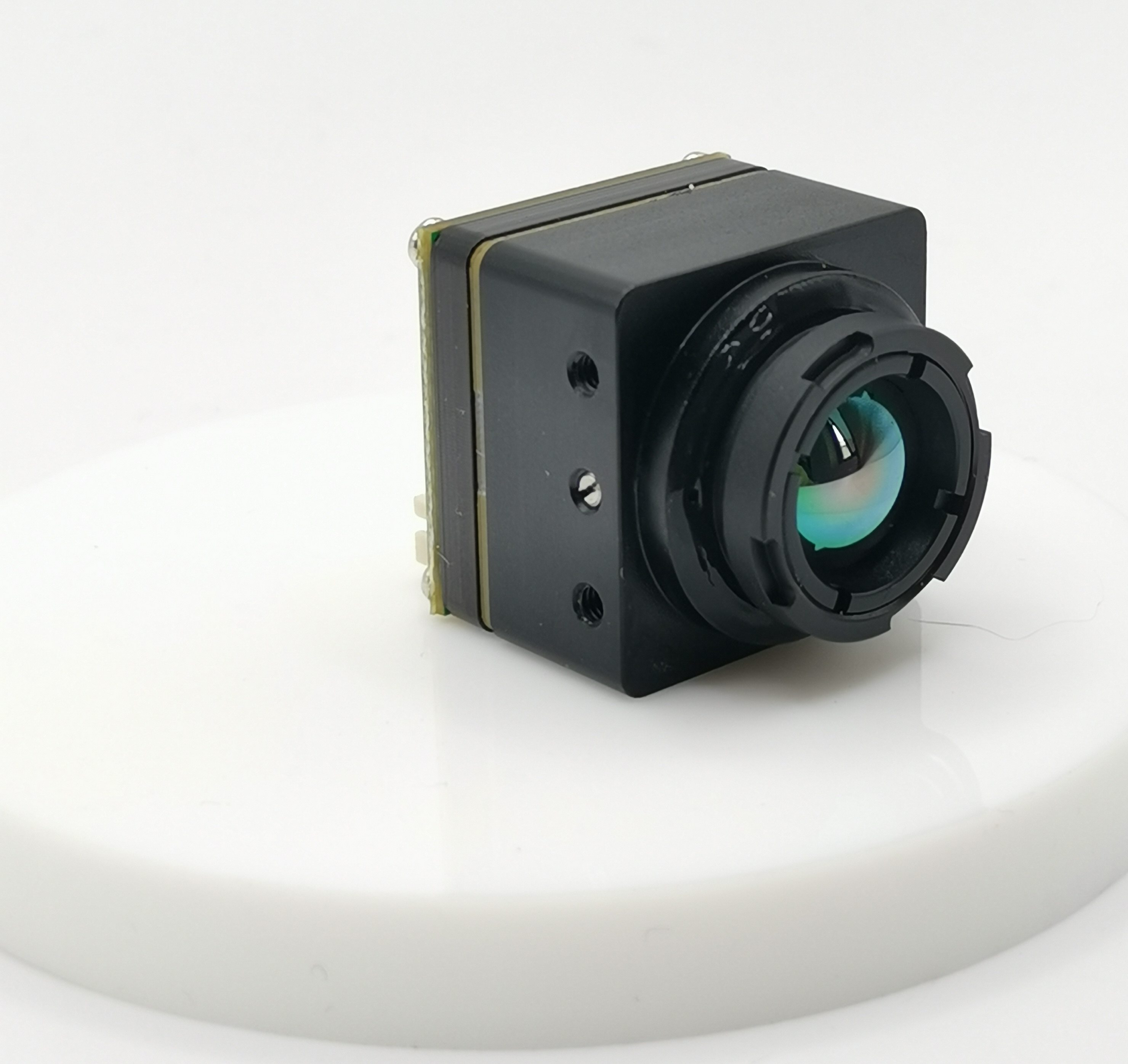How to Choose the Best Thermal Vision Camera for Drones with FPV Capability

Understanding Thermal Vision Technology and Its Application in Drones
Thermal vision technology plays a crucial role in enhancing the capabilities of drones, especially in scenarios where traditional cameras may fall short. Let's delve into the basics of thermal imaging and explore the reasons why integrating a thermal vision camera for drones is essential.
The Basics of Thermal Imaging
How Thermal Cameras Work
Thermal cameras operate based on the detection and interpretation of heat signatures emitted by objects. These cameras capture the infrared radiation emitted by objects, regardless of ambient light conditions, and translate it into visible images. This process enables users to visualize temperature differences and detect objects based on their thermal emissions.
The Role of Infrared Sensors
Infrared sensors are at the core of thermal imaging technology. These sensors detect the heat signatures emitted by objects and convert them into electrical signals, which are then processed to create thermal images. The sensitivity and accuracy of these sensors significantly impact the overall performance and reliability of thermal vision cameras.
Why Use a Thermal Vision Camera for Drones?
Applications: From Search and Rescue to Inspection
The integration of FPV Thermal Cameras with drones opens up a myriad of applications, including search and rescue operations, surveillance, wildlife monitoring, and infrastructure inspection. The ability to detect heat signatures from a distance empowers operators to identify individuals or objects that may be otherwise hidden from view.
Advantages of FPV Capability
The inclusion of First Person View (FPV) capability in thermal vision cameras enhances operational efficiency by providing real-time thermal imagery to drone operators. This feature enables precise navigation through challenging environments such as low-light conditions, dense foliage, or hazardous areas.
Key Features to Look for in a Thermal Vision Camera for Drones
When selecting a thermal vision camera for drones, it's essential to consider key features that can significantly impact its performance and suitability for specific applications. Understanding the crucial aspects such as resolution, range, field of view, compatibility, and integration is vital in making an informed decision.
Resolution and Image Quality
Importance of High Resolution
The thermal vision camera for drones should offer high resolution to ensure clear and detailed thermal imagery. Higher resolution enables operators to discern smaller objects and temperature variations with precision, enhancing the effectiveness of aerial thermal inspections and surveillance missions.
Understanding Thermal Sensitivity
Thermal sensitivity refers to the camera's ability to detect minimal temperature differences. Opting for a camera with high thermal sensitivity is crucial, especially in scenarios where subtle temperature variations need to be accurately identified, such as in building inspections or wildlife monitoring.
Range and Field of View
How Range Affects Performance
The range of a thermal vision camera dictates the maximum distance at which heat signatures can be detected effectively. A longer range equips drone operators with extended detection capabilities, enabling them to cover larger areas during search and rescue operations or perimeter surveillance.
Field of View Considerations
A wide field of view allows the FPV Thermal Camera to capture a broader area in a single frame, providing comprehensive thermal coverage during aerial inspections or monitoring tasks. It enhances situational awareness by minimizing blind spots and ensuring efficient detection of heat-emitting sources within the drone's operational vicinity.
Compatibility and Integration
Ensuring Compatibility with Your Drone
Before investing in a thermal vision camera, it's crucial to verify its compatibility with your specific drone model. Ensuring seamless integration with your drone's existing hardware and software systems is essential for hassle-free operation and optimal performance.
Integration with FPV Systems
Integration with First Person View (FPV) systems is paramount for real-time visualization of thermal imagery during drone operations. The ability to stream live thermal footage directly to the operator's display enhances situational awareness and facilitates precise navigation through challenging environments.
Top Picks for FPV Thermal Cameras
When it comes to selecting the best FPV Thermal Camera for your drone, considering the specific features and benefits of each model is crucial. Let's explore a top pick in this category, the iSun analog FPV thermal camera, along with an overview of other leading models to help you make an informed decision.
iSun Analog FPV Thermal Camera
Features and Benefits
The iSun analog FPV thermal camera stands out due to its exceptional features and benefits that cater to diverse operational needs. With a high-resolution thermal sensor, this camera delivers detailed thermal imagery, allowing operators to discern subtle temperature variations with precision. Its compact and lightweight design ensures seamless integration with various drone models without compromising flight performance. Additionally, the adjustable temperature detection feature empowers users to focus on specific areas of interest within the thermal image, enhancing operational flexibility.
Ideal Use Cases
The versatility of the iSun analog FPV thermal camera makes it suitable for a wide range of applications. From conducting nocturnal wildlife surveys to performing aerial infrastructure inspections, this camera excels in providing real-time thermal vision for enhanced situational awareness. Its compatibility with different drone platforms makes it an ideal choice for professionals engaged in search and rescue missions, perimeter surveillance, and environmental monitoring.
Other Leading Models
Comparison of Features
In addition to the iSun analog FPV thermal camera, several other leading models offer unique features and capabilities worth considering. Models such as XtremeVision Pro and ThermalEye 250D boast advanced thermal sensitivity and customizable color palettes for optimized thermal imaging in various environments. On the other hand, SwiftView X1 stands out for its extended range capabilities, making it suitable for long-range reconnaissance and perimeter security applications.
Selecting the Best Option for Your Needs
When evaluating different FPV thermal cameras, it's essential to align their features with your specific operational requirements. Consider factors such as resolution, range capabilities, compatibility with your existing drone system, and additional functionalities like video recording and live streaming options. By assessing these aspects in relation to your intended use cases, you can identify the best-suited FPV thermal camera that aligns with your operational objectives.
Practical Tips for Integrating and Using Your FPV Thermal Camera
Now that you've selected the ideal FPV thermal camera for your drone, it's essential to ensure seamless integration and maximize its utility. Here are some practical tips for installing and utilizing your thermal camera effectively.
Installation Tips
Mounting Your Camera
When mounting your FPV thermal camera onto your drone, consider the following factors to optimize its performance:
Balanced Weight Distribution: Ensure that the camera's mounting position maintains the drone's balance and stability during flight operations. Proper weight distribution minimizes potential impact on the drone's maneuverability.
Vibration Dampening: Utilize vibration-dampening mounts or accessories to reduce the impact of drone vibrations on the thermal camera. This helps maintain image stability and clarity during aerial maneuvers.
Secure Fastening: Double-check the fastening mechanisms to secure the camera in place. It's crucial to prevent any movement or slippage during flight, ensuring consistent thermal imaging quality.
Connecting to the FPV System
Integrating your FPV thermal camera with the First Person View (FPV) system requires attention to detail for seamless connectivity:
Compatibility Verification: Ensure that the thermal camera's output is compatible with your drone's FPV system input. Verify connector types, signal formats, and voltage requirements for a hassle-free connection.
Cable Management: Organize and secure cables to prevent interference with other drone components or moving parts. Proper cable management reduces the risk of signal loss or damage during flight operations.
System Calibration: Perform system calibration after connecting the thermal camera to ensure accurate temperature readings and optimal image transmission. Calibration enhances overall system reliability and performance consistency.
Maximizing the Use of Your Thermal Camera
Adjusting Settings for Optimal Performance
Fine-tuning your FPV thermal camera settings is crucial for achieving optimal performance in various operational scenarios:
Temperature Range Adjustment: Customize temperature detection ranges based on specific applications, allowing you to focus on relevant heat signatures within a given temperature range.
Color Palette Selection: Explore different color palettes offered by your thermal camera to enhance visibility and contrast based on environmental conditions. Selecting an appropriate palette improves object differentiation in varying backgrounds.
Image Enhancement Filters: Utilize image enhancement filters provided by your thermal camera to improve image clarity and highlight specific details within thermal imagery. These filters can enhance edge sharpness and contrast for better visualization.
Interpreting Thermal Images
Understanding how to interpret thermal images empowers you to extract valuable insights from visual data:
Heat Source Identification: Learn to identify distinct heat sources within thermal images, distinguishing between natural heat emissions and potential anomalies or targets of interest.
Temperature Gradient Analysis: Analyze temperature gradients across different areas within a scene, enabling you to assess variations in heat distribution and identify potential hotspots or cooling anomalies.
Comparative Analysis: Compare current thermal images with reference images from previous flights or known benchmarks. This comparative analysis aids in identifying changes, patterns, or abnormalities over time, enhancing situational awareness.
By following these installation tips and maximizing the use of your FPV thermal camera through effective adjustments and interpretation techniques, you can harness its full potential for diverse applications.
Wrapping Up: Choosing the Right FPV Thermal Camera for Your Needs
Recap of Key Considerations
After exploring the essential features and considerations for selecting a thermal vision camera with FPV capability for drones, it's crucial to recap the key considerations that can guide you in making an informed decision.
Application-Specific Requirements: Assess your specific operational needs and intended applications to determine the most suitable features such as resolution, range, and compatibility with your drone system. Tailoring your choice to match the demands of search and rescue, surveillance, or inspection tasks is paramount.
Performance Optimization: Prioritize high-resolution cameras with superior thermal sensitivity to ensure precise detection of temperature variations. Additionally, consider the range capabilities and field of view to maximize coverage and situational awareness during aerial operations.
Integration and Compatibility: Verify seamless integration with your drone's existing hardware and software systems, ensuring that the FPV thermal camera complements your operational setup. Compatibility with First Person View (FPV) systems is essential for real-time visualization of thermal imagery.
Operational Flexibility: Look for features such as adjustable temperature detection, live streaming options, and image enhancement filters to enhance operational flexibility and utility across diverse scenarios.
Final Thoughts and Recommendations
In conclusion, choosing the right FPV thermal camera for your drone involves a comprehensive assessment of its technical specifications, compatibility with your drone platform, and alignment with your operational requirements. By prioritizing high-resolution imaging, extended range capabilities, seamless integration, and operational flexibility, you can effectively harness the benefits of thermal vision technology in diverse applications.
When considering specific models such as the iSun analog FPV thermal camera or other leading options like XtremeVision Pro and ThermalEye 250D, evaluate their unique features in relation to your operational needs. Selecting a model that aligns with your application-specific demands while offering advanced functionalities will enhance the effectiveness of aerial thermal imaging missions.
Ultimately, investing in a reliable FPV thermal camera tailored to your needs empowers you to elevate situational awareness, conduct precise inspections, and enhance safety across various industries. With careful consideration of key factors and thorough evaluation of available options, you can confidently choose a high-performance FPV thermal camera that meets your unique operational objectives.
See Also
Selecting the Top FPV Thermal Camera for Drone Imaging
Picking the Perfect FPV Thermal Camera for Drone Imaging
Selecting the Ideal FPV Thermal Camera for Your Drone
Selecting the Best FPV Thermal Camera for Drone Surveillance
Selecting the Optimal Thermal Camera for High-Resolution FPV Drones
Contact Us: Ms. Coco Huang
E-mail: sales@iasun.cn
WhatsApp/Wechat: +86 13510421923

